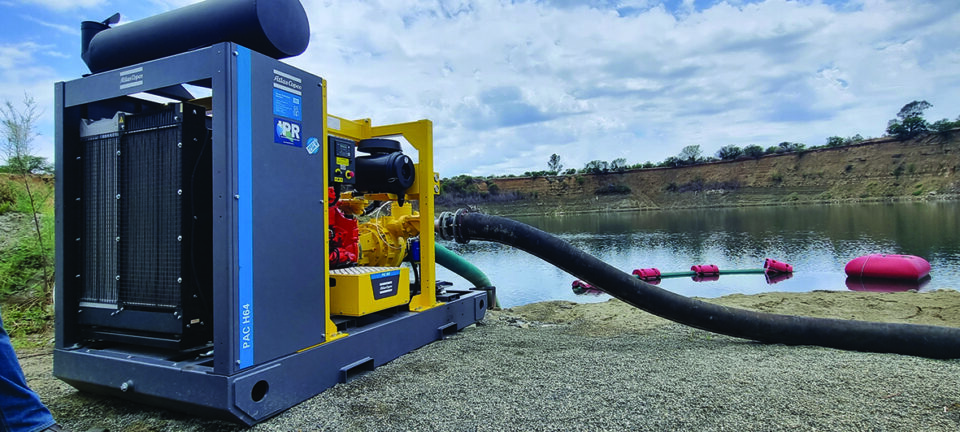When a customer needs a dewatering solution, they might not always be able to specify the exact accessories that must accompany the pump to get the best outcome – which is where IPR can help.
“With our wide range of accessories, and our depth of experience in dewatering and slurry pumping, we can advise our customers on what they need,” says Steve du Toit, Sales Manager at IPR. “We can provide these requirements from our extensive stockholding of pump accessories, so that our recommended solution does the job when it is installed.”
Common accessories in pumping solutions include lay-flat hoses, suction hoses, foot valves, HDPE piping and hose flotation devices, explains Du Toit. These must all be sized and specified according to the demands of the selected pump and the duty that the application demands.
“Correct sizing of pipes – according to their internal diameter – is one of the essential starting points,” he says. “Lay-flat hoses can be used on the discharge end, while rigid pipes are necessary for the suction side.”
Flow meters may also be required, to provide customers with an accurate rate of water flow at the discharge point of the pump. This is vital information to demonstrate that the expected volumes of water are being removed for the customer’s purpose; it may also be a requirement of the customer’s water use licence.
“There are also the electrical components to consider, so the pump control systems need to be designed to suit the pump and its application,” he says. “Measurement devices such as gauges on the suction port and delivery port are also important to monitor that the pump is operating at optimal efficiency.”
He highlights that IPR offers a custom range of accessories, and spends time carefully assessing each customer’s specific site conditions and technical infrastructure. This ensures that all aspects of the solution are attended to, with high quality accessories provided wherever necessary.
With the growing focus on environmental impact management, Du Toit points to the value of accessories such as dewatering bags. These porous bags catch and retain sediments and other material that could contaminate the natural environment. At the same time, they allow cleaner water to seep out, facilitating dewatering in a responsible manner.
“Among the most important accessories are the flotation devices for our hoses and pumps,” he says. “On diesel driven self-priming units, for instance, we recommend that customers use suction hose floats to prevent the hose end from sucking in mud and stones – resulting in damage to the pump unit itself.”
Similarly, with submersible electric pumps it is advisable to use a pump flotation device (PFD). This ensures that the pump is always just below the surface of the water. It therefore does not become buried in mud or silt, which could undermine its performance and cause mechanical damage. The use of a PFD also makes it easy to locate the pump, while the floats show where the discharge piping and electrical cable is positioned at all times.
Another protection measure that IPR can provide is a non-return valve, which is installed in the discharge pipe in close proximity to the pump. This ensures there is no back-pressure on the pump from water in the pipe; this type of pressure can cause serious damage such as shaft breakage when the pump is started.
“With a submersible pump, there is also the danger of this pressure causing the pump impeller to spin in the wrong direction when started – causing the impeller to loosen,” he says.
Finally, he recommends that the accessories used with pumps should always be of a high quality. The risk of malfunction is costly and well beyond the savings on a cheaper item, emphasises Du Toit, and ‘buying cheap’ invariably leads to ‘buying twice’. For this reason, IPR invests only in quality accessories that customers can rely on.



